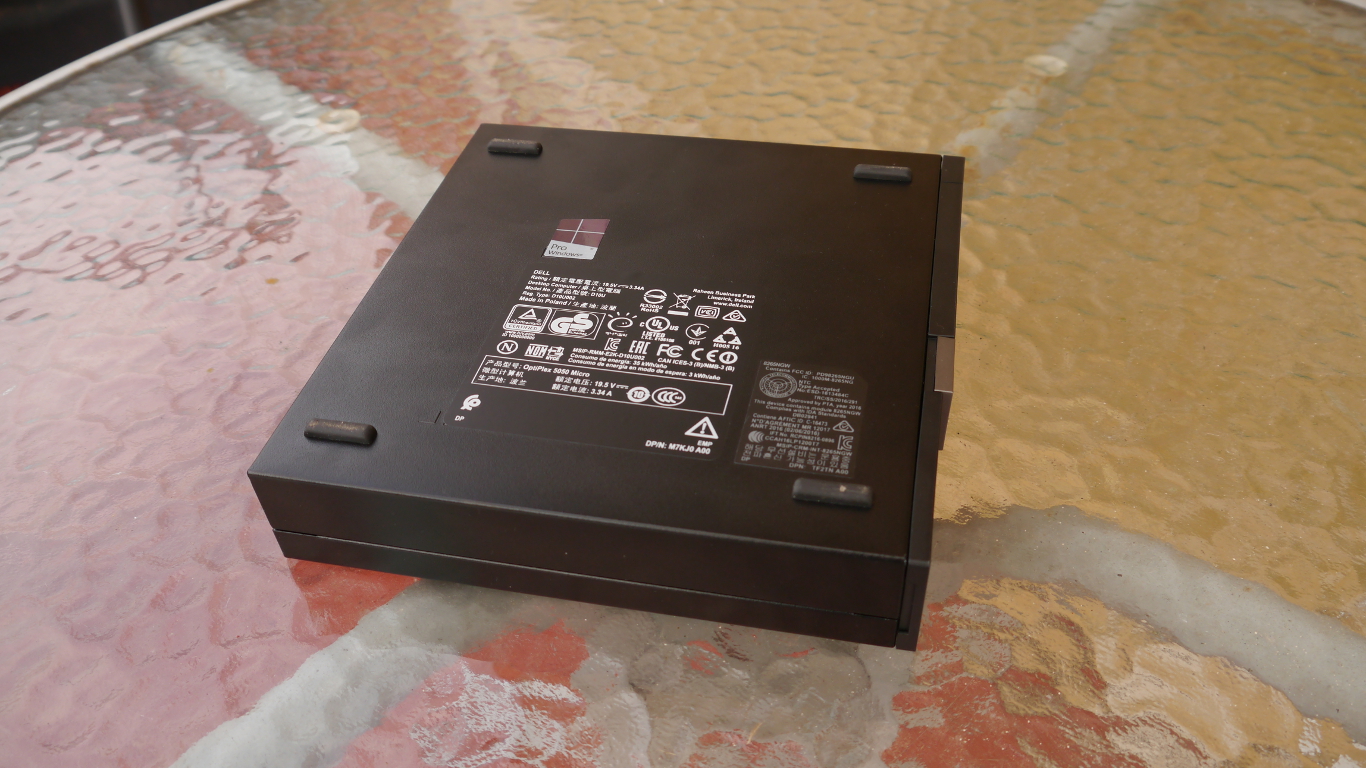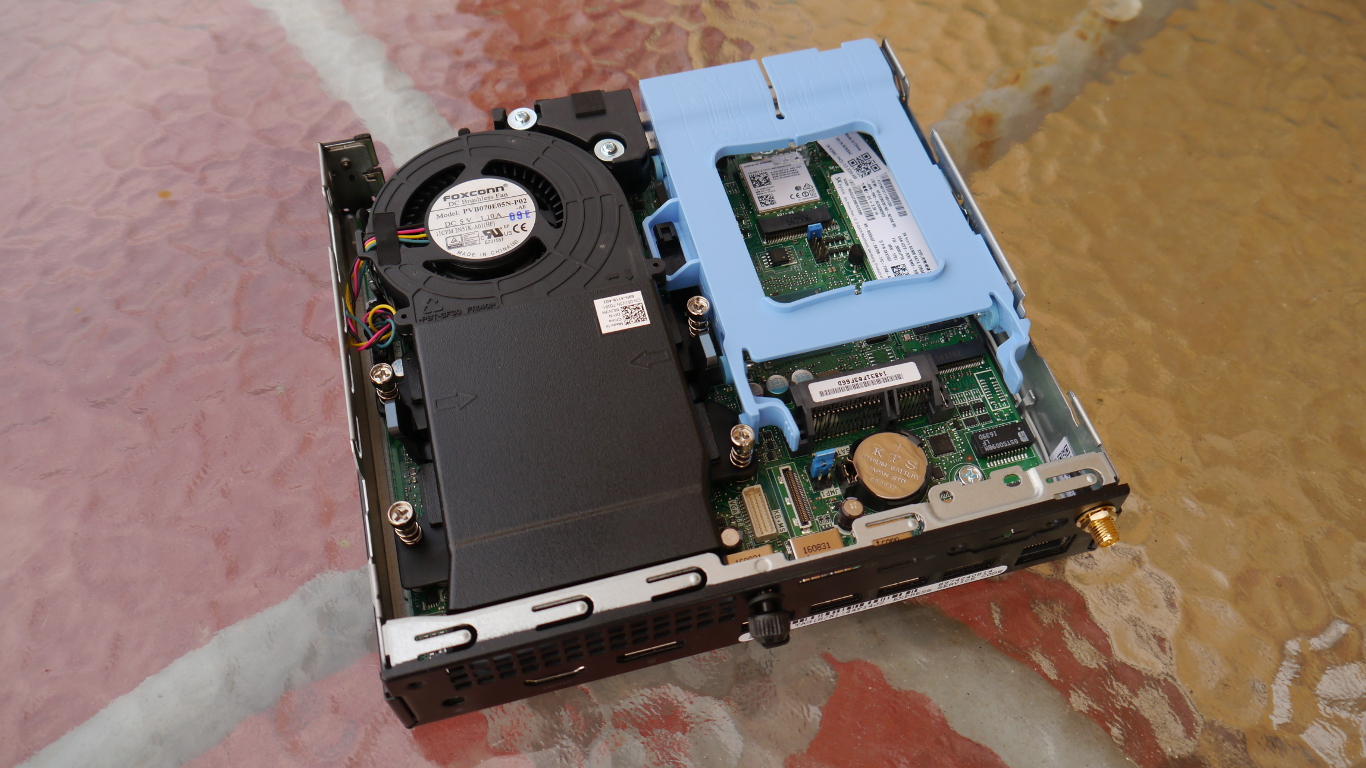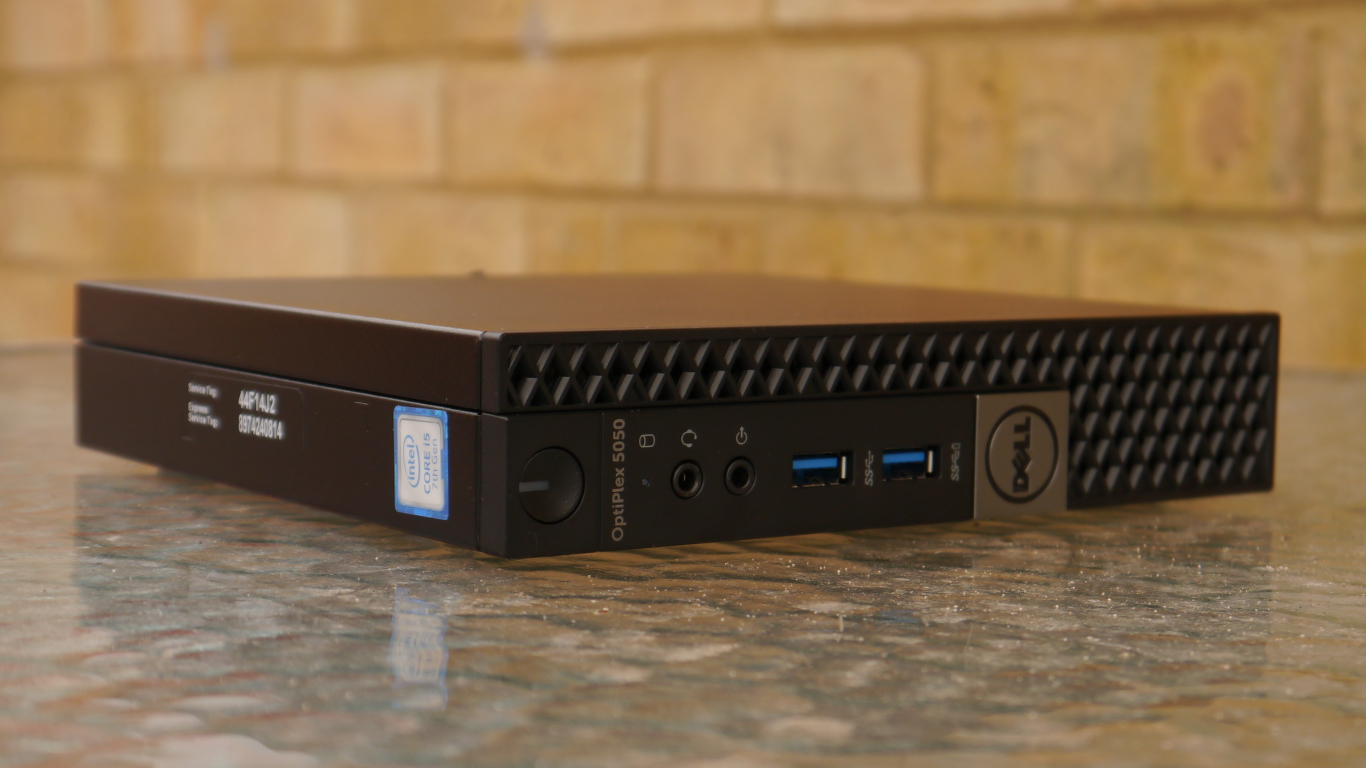TechRadar Verdict
Offering a powerful level of performance in a very small case, alongside plenty of expansion options and a three-year warranty, the OptiPlex 5050 is a great choice for businesses.
Pros
- +
Solidly built
- +
Great performance
- +
Three-year warranty
- +
Wi-Fi as standard
Cons
- -
Expensive
- -
No dual-channel memory option online
Why you can trust TechRadar
In a world where smartphones are being hailed as the next big thing in computing after laptops, desktop PCs might seem rather anachronistic – a throwback to the 1990s when beige was the most popular colour in offices.
The OptiPlex 5050 Micro PC is part of Dell’s new range of OptiPlex models, one which comprises of a traditional tower, a small form factor offering, and this pint-sized PC.
The 5000 series is sandwiched between the more affordable 3000 series and the higher-end 7000 series, and with prices starting at £559 ($720) excluding VAT it’s as expensive as the Vostro 15 5568, a mid-range business laptop. The review sample that was sent to us is the most expensive model at £659 ($845).
Design
Dell engineers have managed to cram a lot of hardware into a 1.17-litre chassis. At 36 x 178 x 182mm, the 5050 Micro is a bit bigger (and thicker) than a DVD case, and a weight of only 1.18kg (without a hard disk drive) means that it will sit comfortably behind most monitors such as Dell’s own UltraSharp U2715H.

It can also be deployed easily and a dozen of these will certainly fit in a drawer. As expected, the chassis is a tool-less one which can be opened within seconds; it is as solid as the previous generations of OptiPlex models.
There are plenty of gaps at the front and back of the PC to ensure a good airflow and keep components cool. The Foxconn fan is quiet enough to be used in most offices and is the only moving part if you opt for an SSD.

There are plenty of ports to satisfy demanding system administrators: these include six USB 3.0 ports, one HDMI and a DisplayPort, one Gigabit Ethernet connector, two audio inputs, one connector for a WLAN antenna and a proprietary one for the 65W power supply unit (19.5V, 3.34A).
Sign up to the TechRadar Pro newsletter to get all the top news, opinion, features and guidance your business needs to succeed!
The 5050 Micro has been engineered in such a way that it is compact and yet versatile given the proviso that you pair it with the right accessories – all-in-one or vertical stands, VESA mounts and there’s even a DVD enclosure to fit it under a desk.

Specifications
The 5050 Micro series employs the same base hardware, namely an Intel Core i5-7500T processor and a BTX motherboard. The CPU is a 14nm quad-core Kaby Lake model with four threads, 6MB cache, a 2.7GHz base clock speed and a 35W TDP.
It runs with integrated graphics – the processor’s Intel HD Graphics 630 – clocked at 350MHz with support for up to three external displays (and 4K at 60Hz).
There’s a single 8GB Micron memory module (DDR4 2400MHz non-ECC), and that will have a negative impact on the 5050’s performance as memory bandwidth is halved and there’s no option - online at least - to add more RAM.
You can do it manually but that will mean opening the casing, removing the heatsink fan and adding the memory module by yourself.

A 128GB SATA M.2 SSD from Hynix, an Intel Wireless 8265 802.11ac wireless card (that offers Bluetooth), along with a standard keyboard and mouse round off the component/peripheral list.
Note that legacy port adaptors are available during the customisation process and there are no card readers. Also, you can save a few pounds by deselecting the input peripherals.
Furthermore, you can slot in a 2.5-inch hard disk drive, and the system runs Windows 10 Pro. Dell throws in a 30-day trial of McAfee Small Business Security and a free copy of CyberLink Media Suite Essentials, a multimedia software package that does data backup and video playback.

Désiré has been musing and writing about technology during a career spanning four decades. He dabbled in website builders and web hosting when DHTML and frames were in vogue and started narrating about the impact of technology on society just before the start of the Y2K hysteria at the turn of the last millennium.
